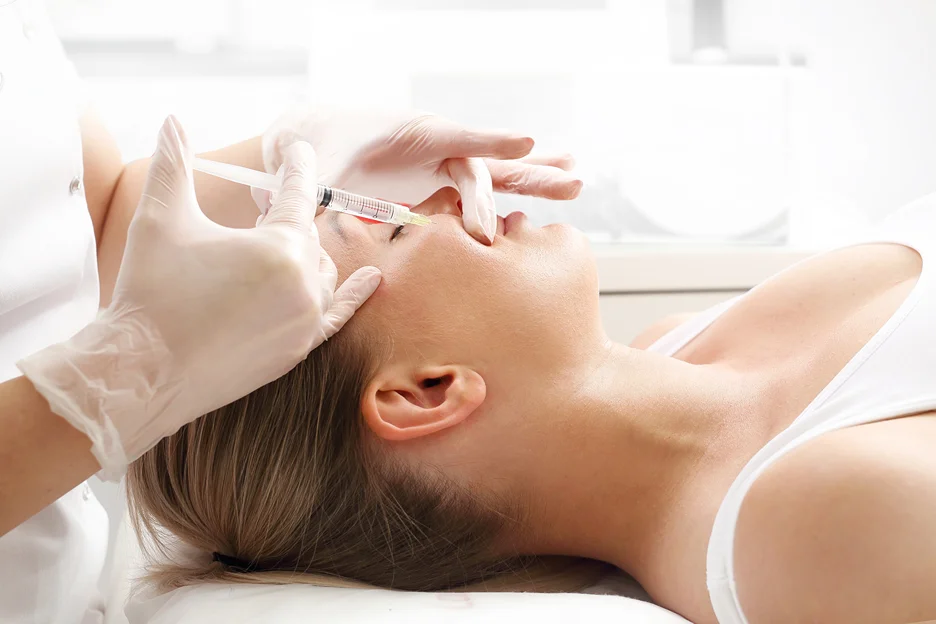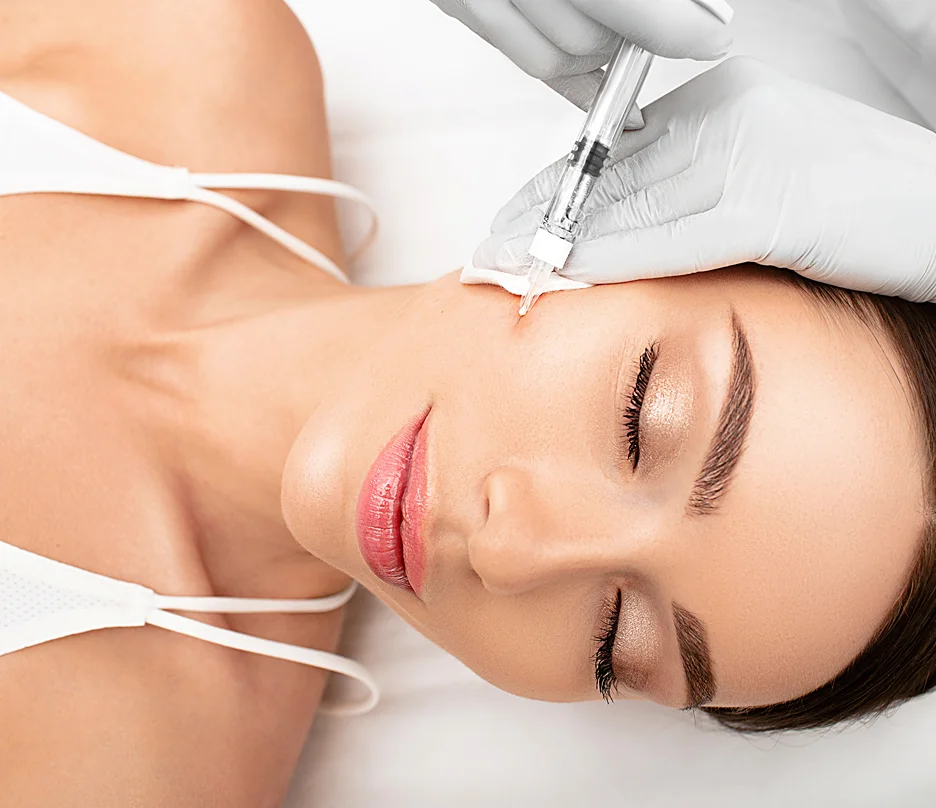For Patients
About
For Providers
Locations
Blog
Contact
Menu
Understanding the differences between cheek and nasolabial fold fillers is crucial for achieving your desired look
When deciding between cheek fillers and nasolabial fold fillers for facial enhancement, it's essential to understand their distinct purposes.
Cheek fillers are used to add volume to the cheeks, enhancing cheekbone structure and overall facial symmetry. This can create a more youthful and defined look. For example, individuals with flat or hollow cheeks may benefit from cheek fillers to achieve a plumper appearance.
Nasolabial fold fillers, on the other hand, target the lines that run from the sides of the nose to the corners of the mouth. By filling in these deep folds and wrinkles, nasolabial fold fillers can reduce the visible signs of aging in this area.
For instance, individuals looking to smooth out smile lines around the mouth may opt for nasolabial fold fillers to achieve a smoother, more rejuvenated look.
Understanding the specific concerns you want to address, such as enhancing cheek volume or reducing nasolabial folds, will help you choose the right filler for your desired outcome.
Cheek fillers add volume and definition to cheekbones, enhancing midface appearance. They indirectly reduce nasolabial folds by lifting the cheeks. Placed above the cheekbone, they create fullness and structure for improved facial symmetry.
Nasolabial fold fillers target lines around the mouth and nose directly. They smooth deep wrinkles and folds in these areas. Placed around the mouth and nose, they boost collagen production and rejuvenate facial contour.
Cheek fillers focus on enhancing facial structure and symmetry, while nasolabial fold fillers concentrate on wrinkle smoothing and collagen stimulation. Understanding these differences is crucial for choosing the right filler for desired facial enhancement results.

Cheek fillers enhance cheek volume and definition for a youthful appearance. This non-invasive treatment restores a smoother, more refined look by adding volume and contour to the cheeks.
Unlike fillers for nasolabial folds, which target lines around the mouth and nose, cheek fillers focus on rejuvenating the face's structure. They create a more radiant and youthful appearance by improving facial definition and structure.
Cheek fillers are specifically designed to enhance cheek volume and contour, rejuvenating the overall facial appearance.
Nasolabial fold fillers like Bellafill, Belotero, and Juvéderm are injections that smooth wrinkles and boost collagen production in the skin. This process reduces nasolabial fold appearance and enhances facial volume, leading to softer skin and increased self-esteem with minimal recovery time.
Side effects of nasolabial fold fillers may include temporary redness, swelling, and bruising, which usually resolve within a few days.
Rare complications like tissue necrosis can occur, so consulting a qualified healthcare provider before the procedure is essential.
When enhancing facial features, cheek fillers emphasize lifting and defining cheekbones, while nasolabial fold fillers target lines and creases.
Cheek fillers focus on enhancing the cheekbone area to create a more defined and lifted appearance. By adding volume to the cheeks, cheek fillers can improve facial symmetry and contour.
Nasolabial fold fillers are designed to reduce the appearance of lines and creases around the nose and mouth. These fillers can smooth out deep folds and wrinkles, giving a more youthful and rejuvenated look.
Cheek fillers and nasolabial fold fillers enhance facial structure differently. Cheek fillers add volume to the upper face, improving cheekbone structure and overall facial appearance. This indirectly reduces the appearance of nasolabial folds by lifting the cheeks.
Nasolabial fold fillers target lines around the mouth, smoothing out wrinkles for a youthful look. Each type serves a unique purpose in facial enhancement. Cheek fillers focus on enhancing cheekbones, while nasolabial fold fillers target specific wrinkles for a more rejuvenated appearance.

Cheek fillers can help reduce the appearance of nasolabial folds by adding volume and lifting the cheeks, which indirectly softens the depth of the folds. This approach, when combined with nasolabial fold fillers, offers a balanced facial rejuvenation by enhancing structure and fullness.
The lifting effect of cheek fillers minimizes sagging skin that contributes to nasolabial folds, also improving marionette lines. By restoring natural facial contours, cheek fillers create a harmonious and youthful appearance, especially when targeting the nasolabial area.
Incorporating cheek fillers into a treatment plan can significantly impact the appearance of nasolabial folds, providing a more radiant and refreshed look by addressing age-related changes in facial volume and structure.
Different types of dermal fillers are available for nasolabial fold treatment, including Bellafill, Belotero, and Juvéderm. These fillers can target specific areas like the nasolabial folds, marionette lines, or mouth corners.
For instance, Juvéderm is commonly used to add volume to the nasolabial folds, smoothing out wrinkles and lines. Identifying the specific treatment areas that need filler injections, whether it's the nasolabial folds themselves or adjacent regions, is crucial for achieving optimal results.
Consulting with a healthcare provider can help determine the best filler type and treatment plan for individual needs.
Nasolabial fold treatment involves using dermal fillers like Bellafill, Belotero, and Juvéderm to smooth out wrinkles around the nose and mouth. These fillers are injected into the folds to plump the skin and stimulate collagen production.
The results can last up to a year, providing long-lasting improvement. Common side effects include temporary redness, swelling, and bruising, which typically resolve on their own.
Consulting a qualified healthcare provider is essential to discuss the procedure, risks, and outcomes. Understanding the different types of dermal fillers and their uses can help you make informed decisions about your treatment.
Dermal fillers can target specific areas like nasolabial folds, smile lines, or marionette lines to address wrinkles and fine lines.
Common fillers like Bellafill, Belotero, and Juvéderm are used for nasolabial fold treatments. They plump the skin, stimulate collagen production, and provide immediate visible improvements lasting up to a year.
While side effects such as redness, swelling, and bruising are common, minor risks like itching and rare complications like tissue necrosis may occur.

Choosing between cheek fillers and nasolabial fold fillers depends on your specific goals. If you want to enhance your facial structure and reduce smile lines, cheek fillers with hyaluronic acid can be a good option. They lift the midface, indirectly improving nasolabial folds.
On the other hand, if you're more concerned about smile lines, nasolabial fold fillers are designed to fill in these lines directly for a smoother, youthful look. Ultimately, your choice should align with your desired outcome and the expertise of your injector.
Cheek fillers and nasolabial fold fillers target different areas of the face for rejuvenation.
Cheek fillers are used to revitalize the mid-face, providing a lifting effect that can enhance the overall facial appearance. For example, Sarah, a 42-year-old, opted for cheek fillers to address volume loss in her cheeks, which in turn helped lift her nasolabial folds.
Nasolabial fold fillers, on the other hand, are specifically designed to target deep creases that form between the nose and mouth. By filling in these lines, nasolabial fold fillers can smooth out the area and reduce the appearance of wrinkles.
While cheek fillers lift the entire face by adding volume to the mid-face, nasolabial fold fillers focus on addressing deep creases in a specific area to achieve a more youthful and radiant look.

Join Dr. Lanna & Dr. Doshi for a Transformation
Unlock the possibilities with our certified facial and oculofacial plastic surgeries. Attend our free webinar to find out how we can tailor solutions for you, with financing available to fit your budget.
